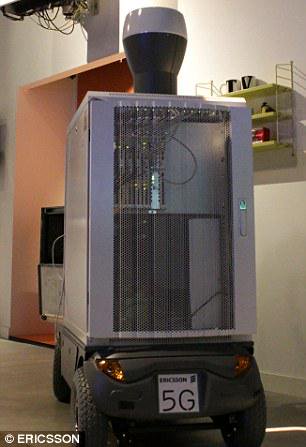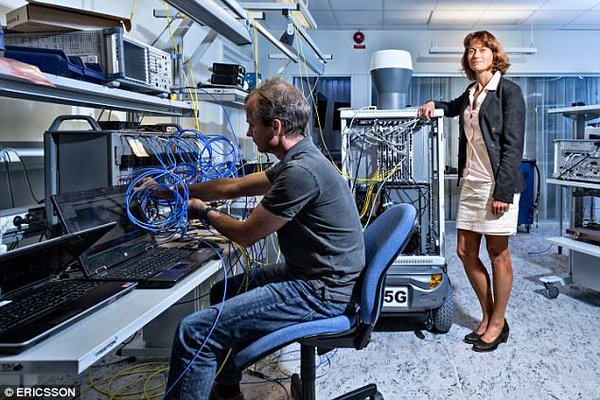Network Manufacturers Test 5G Generation Wireless

Ericsson’s 5G mobile trolley
Not everyone knows what 4G is, mobile operators have just begun to install equipment to support LTE / LTE Advanced in some places, and in some places they didn’t even think about starting - and technology giants are already testing the new generation of communications, conditionally called "5G". Wireless innovation companies are confident that we will see the first 5G networks as early as 2020.
With the name of the 4G standard, there really was some confusion - the International Telecommunication Union initially set standards for it at least 100 Mbit / s for fast moving users, and from 1 Gbit / s for slow (pedestrians). However, mobile operators hastened to declare their modernization of 3G-networks "transition to 4G", although in reality it was a transition to a slower standard LTE.
But as a result of significant improvements in equipment (and pressure from marketers), ITU still recognized the right to be called a “4G connection” for modern LTE. True, for example, MTS under the name 4G provide communication with a maximum speed of up to 75 Mbps .
And here is the recently launched new LTE Advanced standard."Formally satisfies constraints ITU 4G, and therefore has to be called" real 4G ». Who is this standard, e.g., megaphone supports Moscow network within Garden ring, and communicates with a maximum speed of 300 Mbit / s.
In 5G will be called a new high-speed connection due to this difficult fate of the names of standards, and Ericsson this year is already testing its version of such a connection that ideally can reach a speed of 2 Gb / s - this, for example, is 20 times faster than standard wired Ethernet -100 Mbps connection, only mobile naya.
True, the Ericsson test equipment got conditional mobility - 70-kilogram equipment had to be carried on a cart. Naturally, this is just a prototype, and also multifunctional - Ericsson test equipment can emulate the operation of any mobile device simply by running different programs.

Such speeds will have to be implemented using 73 GHz radio waves, that is, only tens of millimeters long. And 2 Gb / s is not the limit. In April, Nokia Networks showed off test equipment capable of 10 Gb / s.
The problem with high-speed networks is that lower frequencies are already occupied, and the higher the frequency, the smaller the distance at which reliable transmission is possible. Therefore, high-speed networks should be built so that there are no large distances between the device and the transmitter. The “Internet of things”, which is inevitably approaching us, may become a partial solution to this problem - if the connected devices will serve as signal transmitters.
But there are completely opposite studies: if we accept that things connected to the Internet, ideally, should not require frequent recharges, but work on a single charge for months or even years, then they will need a network that is not fast, but energy efficient. For such devices, future networks must provide low-speed communications that will not require frequent maintenance and high energy costs.
So while the 5G standard has not yet been defined and is not fully considered. The appearance of the standard is expected only in 2019. Meanwhile, mobile operators are on the heels of next-generation satellite communications. If everything goes according to plan, then the OneWeb project will launch nearly 700 satellites into orbit by 2019that can provide Internet access from anywhere in the world. Who knows how this will affect the requirements and standards associated with future cellular networks.
